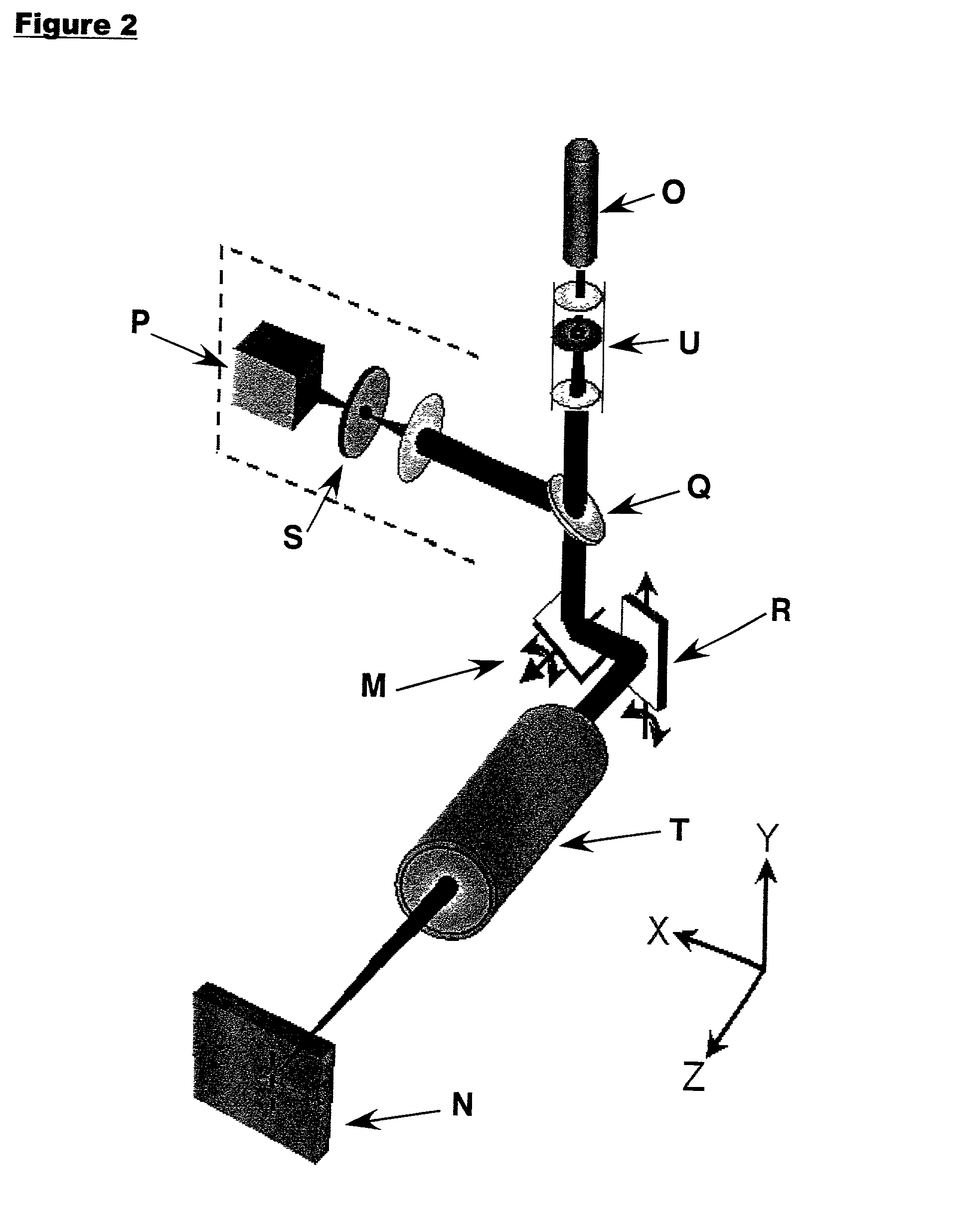Multiple microchannels chip for biomolecule imaging
- Summary
- Abstract
- Description
- Claims
- Application Information
AI Technical Summary
Benefits of technology
Problems solved by technology
Method used
Image
Examples
Embodiment Construction
[0062] FIGS. 3 and 5 of the drawings show prior art microchannels. Each such microchannel is a regular array of the unilength type in perpendicular position to the surface of the plane. It is vertical or upright, inside the glass observation plate. This microchannel is of uniform length and shape, and is vertical. As further shown in FIG. 1, it needs to be scanned through the entire length of the channel for detection, it requires special scanning device, and is therefore expensive. It has average emission excitation, a cross-talk, and a halo circle around the top sample access end mouth constituting an artifact. It has average to low sensitivity. Its maximum operational diameter is 10.mu. or less. It further needs seals and vacuum pressure to engage the water sample inside the microchannel, due to the microchannel diameter being too small for unassisted engagement.
[0063] As is shown in prior art FIG. 3A, there is a top end view of two adjacent channels when looking from top through...
PUM
 Login to View More
Login to View More Abstract
Description
Claims
Application Information
 Login to View More
Login to View More - R&D
- Intellectual Property
- Life Sciences
- Materials
- Tech Scout
- Unparalleled Data Quality
- Higher Quality Content
- 60% Fewer Hallucinations
Browse by: Latest US Patents, China's latest patents, Technical Efficacy Thesaurus, Application Domain, Technology Topic, Popular Technical Reports.
© 2025 PatSnap. All rights reserved.Legal|Privacy policy|Modern Slavery Act Transparency Statement|Sitemap|About US| Contact US: help@patsnap.com



